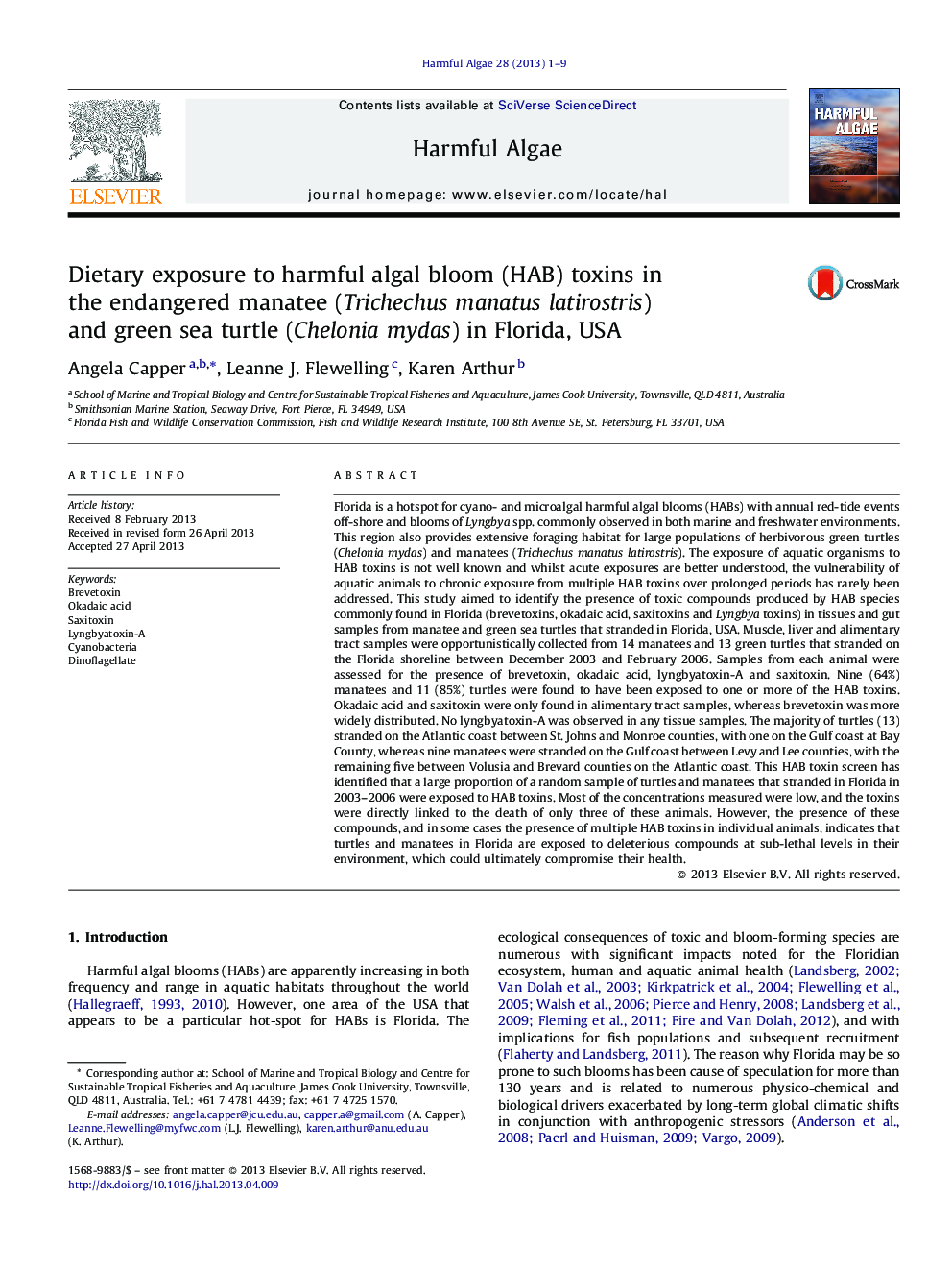| کد مقاله | کد نشریه | سال انتشار | مقاله انگلیسی | نسخه تمام متن |
|---|---|---|---|---|
| 4545443 | 1626943 | 2013 | 9 صفحه PDF | دانلود رایگان |

• 64% of manatees and 85% of turtles sampled in Florida had been exposed to one or more harmful algal bloom (HAB) toxins.
• Okadaic acid and saxitoxin were only found in alimentary tract samples, whereas brevetoxin was more widely distributed.
• No lyngbyatoxin-A was observed in any tissue samples.
• The presence of HAB compounds indicates turtles and manatees in Florida are exposed to deleterious compounds at sub-lethal levels.
• Exposure to multiple HAB compounds could ultimately compromise turtle and manatee health.
Florida is a hotspot for cyano- and microalgal harmful algal blooms (HABs) with annual red-tide events off-shore and blooms of Lyngbya spp. commonly observed in both marine and freshwater environments. This region also provides extensive foraging habitat for large populations of herbivorous green turtles (Chelonia mydas) and manatees (Trichechus manatus latirostris). The exposure of aquatic organisms to HAB toxins is not well known and whilst acute exposures are better understood, the vulnerability of aquatic animals to chronic exposure from multiple HAB toxins over prolonged periods has rarely been addressed. This study aimed to identify the presence of toxic compounds produced by HAB species commonly found in Florida (brevetoxins, okadaic acid, saxitoxins and Lyngbya toxins) in tissues and gut samples from manatee and green sea turtles that stranded in Florida, USA. Muscle, liver and alimentary tract samples were opportunistically collected from 14 manatees and 13 green turtles that stranded on the Florida shoreline between December 2003 and February 2006. Samples from each animal were assessed for the presence of brevetoxin, okadaic acid, lyngbyatoxin-A and saxitoxin. Nine (64%) manatees and 11 (85%) turtles were found to have been exposed to one or more of the HAB toxins. Okadaic acid and saxitoxin were only found in alimentary tract samples, whereas brevetoxin was more widely distributed. No lyngbyatoxin-A was observed in any tissue samples. The majority of turtles (13) stranded on the Atlantic coast between St. Johns and Monroe counties, with one on the Gulf coast at Bay County, whereas nine manatees were stranded on the Gulf coast between Levy and Lee counties, with the remaining five between Volusia and Brevard counties on the Atlantic coast. This HAB toxin screen has identified that a large proportion of a random sample of turtles and manatees that stranded in Florida in 2003–2006 were exposed to HAB toxins. Most of the concentrations measured were low, and the toxins were directly linked to the death of only three of these animals. However, the presence of these compounds, and in some cases the presence of multiple HAB toxins in individual animals, indicates that turtles and manatees in Florida are exposed to deleterious compounds at sub-lethal levels in their environment, which could ultimately compromise their health.
Journal: Harmful Algae - Volume 28, August 2013, Pages 1–9